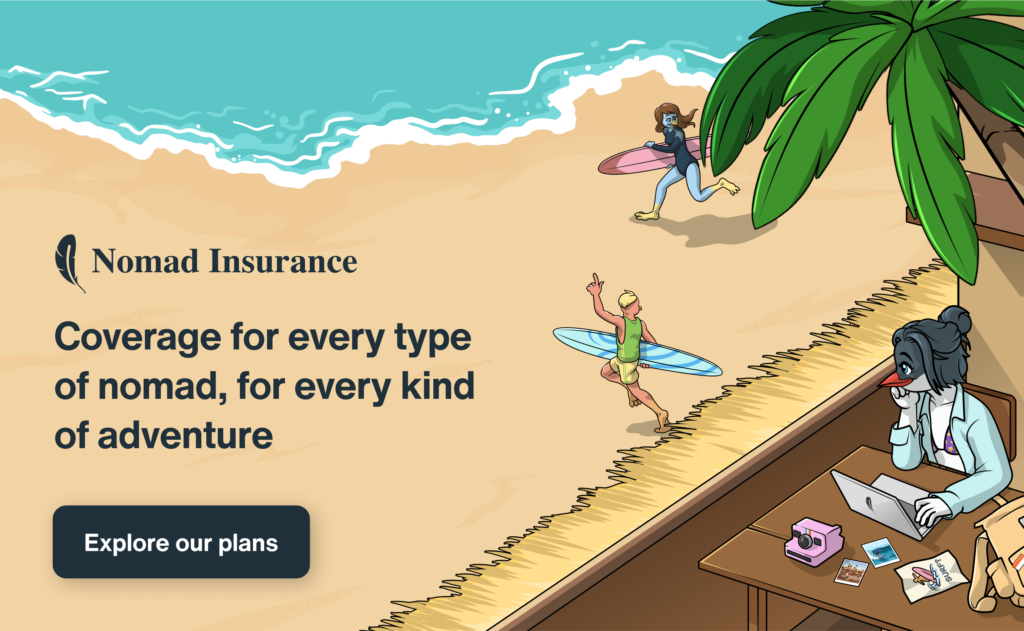Looking for what to do in Phnom Penh? You’ve come to the right place. When we first visited Cambodia in 2019, we were left with a bittersweet feeling for not exploring its capital, Phnom Penh. At the time, it didn’t fit into our itinerary, so we decided to leave it for another trip. We knew that, sooner or later, we’d return, and that moment came in 2025 during our second trip around the world.
Phnom Penh is a vibrant city where past and present intertwine in a unique way. With its rich history, from the colonial era to the darkest moments of the Khmer Rouge regime, the city offers a fascinating mix of culture, architecture, and authentic experiences. During our stay, we were captivated by its wide boulevards, the lively atmosphere along the banks of the Tonle Sap River, and visits to its historical and cultural landmarks, such as the Royal Palace and the National Museum.
If you’re planning to visit and looking for what to do in Phnom Penh, get ready to be amazed by its unique energy and countless things to do in the city. From exploring the heart of Phnom Penh to discovering the Khmer cultural heritage, this city promises an unforgettable experience.
Table of Contents
Where to Stay in Phnom Penh



When we visited the city, we stayed at Sofitel Phnom Penh Phokeethra, a truly unique luxury hotel. The experience was unforgettable, and the place is perfect for those seeking comfort and sophistication. Apart from this, here are the best areas to stay in Phnom Penh:
- Tonle Bassac: A growing area with boutique hotels and sophisticated restaurants, perfect for those looking for a more authentic experience.
- Riverside: Ideal for those who want to be close to major attractions, like the Royal Palace and the National Museum.
- BKK1: A modern and peaceful area, ideal for families and couples seeking comfort.
- Daun Penh: A historic neighborhood with colonial architecture and close to tourist spots.
Check out our recommendations where to stay in Phnom Penh and our full experience at Sofitel Phnom Penh Phokeethra.
What to Do in Phnom Penh
Phnom Penh, the vibrant capital of Cambodia, is a destination where history meets modernity. Between ancient monuments, lively markets, and poignant memorial sites, there’s so much to explore. Here’s our guide with the best places to visit.
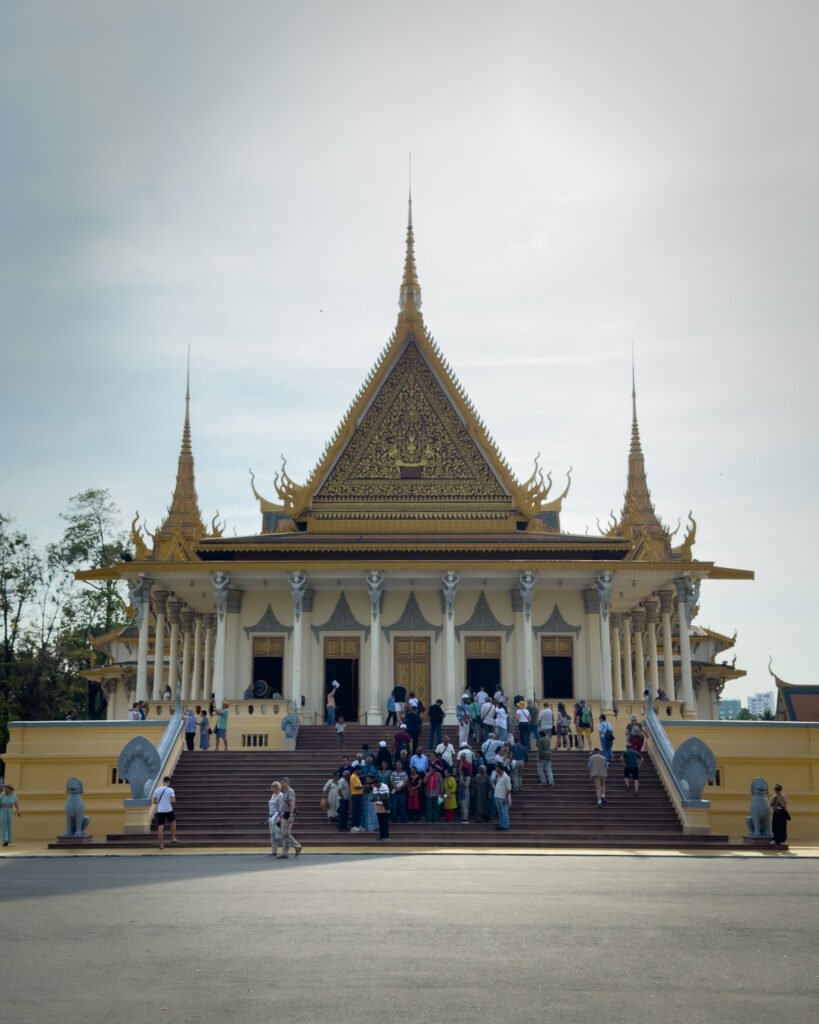

1. Royal Palace
One of the most impressive monuments in Phnom Penh, the Royal Palace was built in 1866 by King Preah Bat Norodom, the great-grandfather of the current monarch. It is located in the old center of the city, in a spot chosen by astrologers and ministers due to its spiritual significance. The king was seen as a direct descendant of the gods, and the palace reflects this aura of power and grandeur.
2. Silver Pagoda
Inside the Royal Palace complex, you’ll find the Silver Pagoda, whose floor is covered with 5 tons of shiny silver. The marble staircase leads to a temple that houses the Emerald Buddha, made of Baccarat crystal, and the Golden Buddha, adorned with 9584 diamonds – the largest weighing 25 carats! A true spectacle of luxury and devotion.
3. Riverside

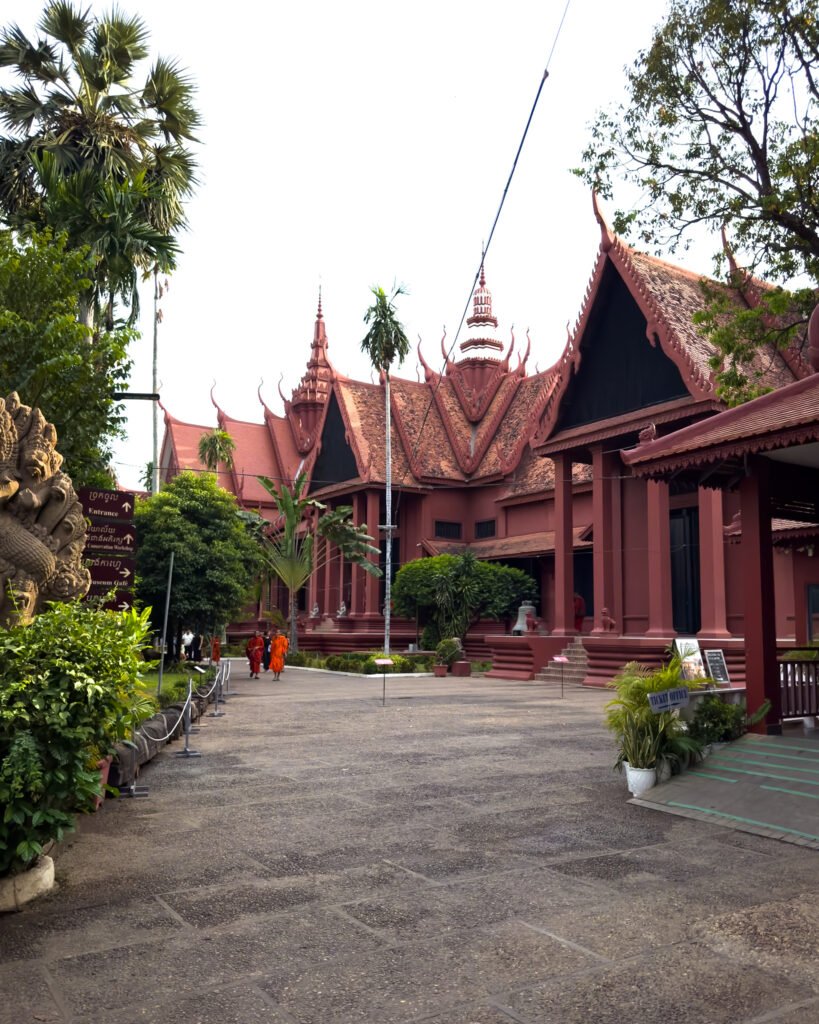
If you want to relax, Riverside is the ideal spot. Along the Tonle Sap, Bassac, and Mekong rivers, you’ll find boat rides, restaurants with views, and a lively nightlife scene with bars and clubs for every taste.
4. National Museum of Cambodia
The National Museum of Cambodia houses an impressive collection of Khmer sculptures from the pre-Angkor to post-Angkor periods. The building, in traditional Cambodian style, was built by the French in 1917 and transports you through centuries of history and art. The museum is open daily from 8 AM to 11:30 AM and 2:30 PM to 5 PM.
5. Wat Phnom
The only “hill” in Phnom Penh, standing at 27 meters tall, is a legendary site. It is said that the first temple was built in 1373 to house four Buddha statues found in the river. The main entrance, with lions and naga (mythical serpent) sculptures, makes the visit even more special.
6. Independence Monument
Inaugurated in 1958, the Independence Monument celebrates Cambodia’s liberation from French rule in 1953. The lotus-shaped structure was designed by architect Vann Molyvann and is a national symbol of freedom and resistance.
7. Central Market (Phsar Thmei)
With its iconic Art Deco dome, the Central Market is perfect for those who want to explore the local culture. Here you’ll find everything: jewels, antiques, books, fabrics, and souvenirs. Ideal for those who love to discover authentic markets!
8. Russian Market (Psar Tuol Tom Pong)
The Russian Market was the meeting point for Soviet expatriates in the 80s. Today, it remains famous for its variety of products – handicrafts, jewelry, ceramics, fabrics, and tailors who make adjustments on the spot. Don’t miss the chance to try local delicacies at the food stalls.
9. Tuol Sleng Genocide Museum
Once a high school, transformed by the Khmer Rouge regime into the S-21 prison, where more than 17,000 people were tortured and executed. The Tuol Sleng Genocide Museum preserves the cells, documents, and photographs of the prisoners, serving as a place of remembrance and reflection on the atrocities of Cambodia’s recent history.
10. Choeung Ek Killing Fields
One of the most poignant places in the city. Here, between 1975 and 1978, more than 17,000 people were executed by the Khmer Rouge regime. The memorial with the glass Stupa, which houses thousands of skulls arranged by gender and age, is a powerful reminder of the consequences of extremism and dictatorship.
Other Experiences in Phnom Penh
11. Wat Ounalom Monastery


Considered the spiritual center of Buddhism in Cambodia, this monastery is a great place to learn more about the religion and local culture. The peaceful atmosphere makes it a spiritual retreat in the midst of the bustling city.
12. A Revitalizing Massage

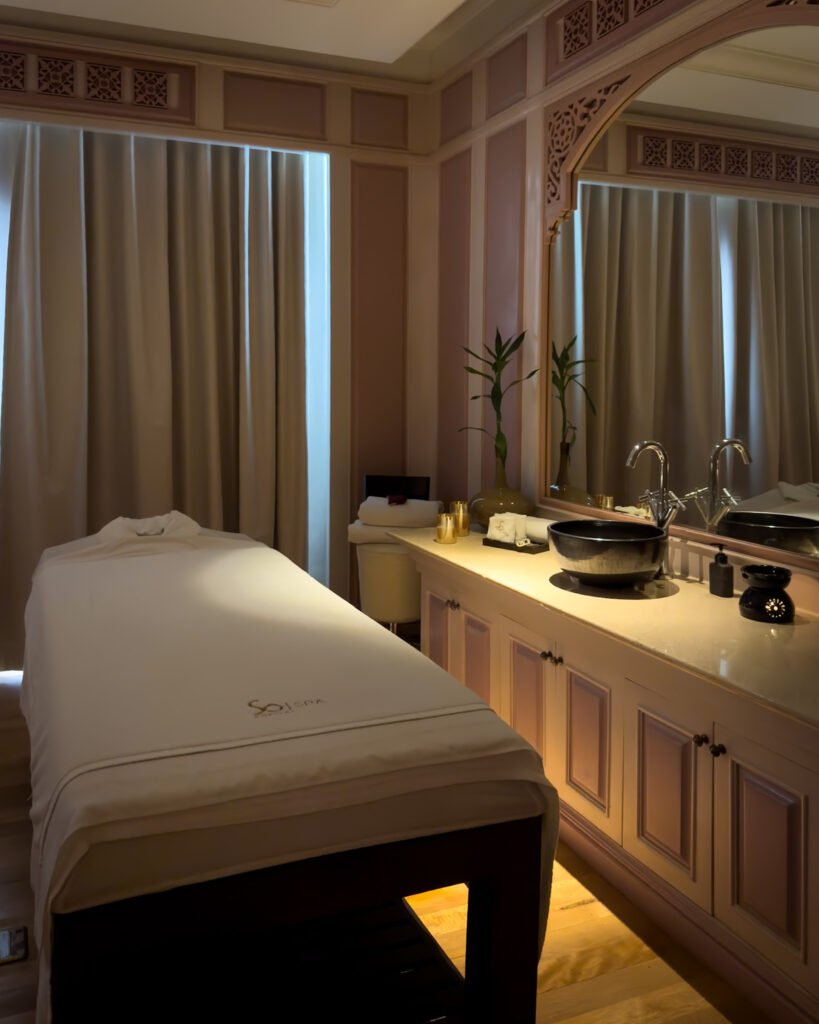

After all that exploration, there’s nothing like a massage to recharge your energy! At Sofitel SPA, you can enjoy treatments inspired by ancient traditions combined with the sophistication of French cosmetics. The space includes 10 treatment rooms, couple rooms, and a deep relaxation area. It was one of the best massages we had in Cambodia, a luxury experience with total relaxation.
13. A Day of Sports or Pool
The Phokeethra Sports Club, within Sofitel, has an amazing pool, 4 tennis courts, 2 squash courts, a gym, sauna, and Turkish bath. Whether you want to work out or simply spend a relaxing day by the pool, this is a great option. Located on a 7-hectare property right next to downtown Phnom Penh, it offers the perfect balance of proximity to everything and tranquility.
14. Futures Factory


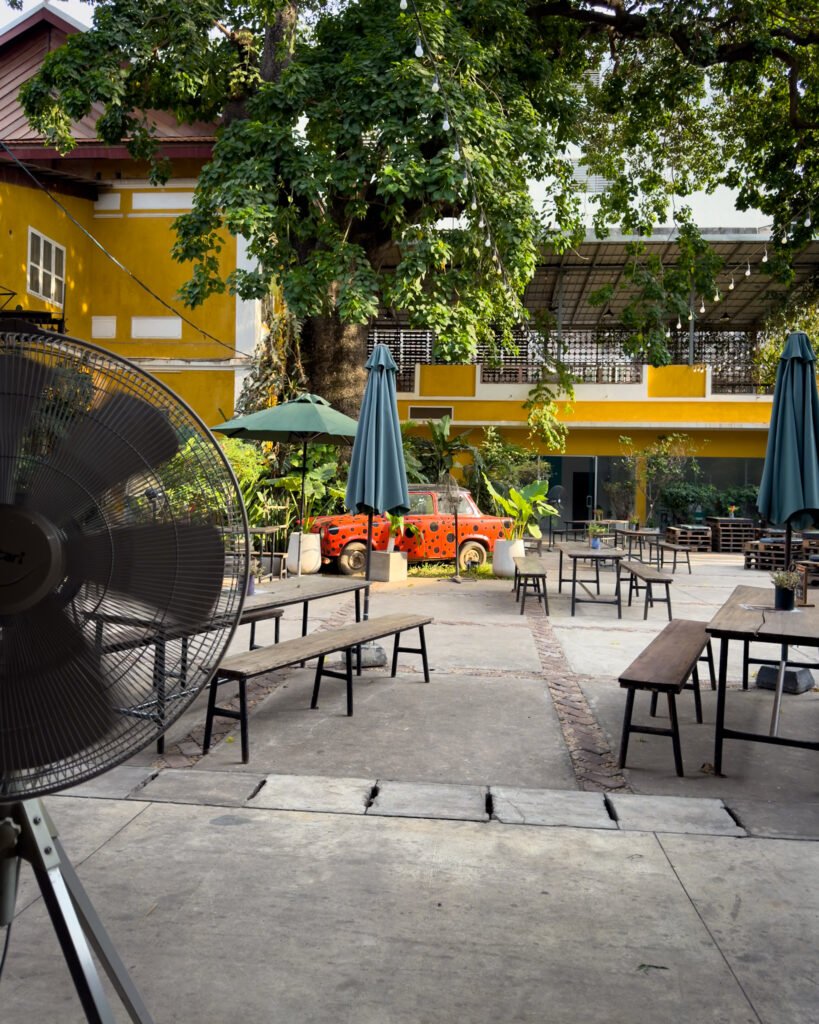
We stumbled upon this space by accident and loved it! The Futures Factory is an innovative concept where you can find cafés, bars, and cultural events. We stopped here for a beer and found it to be the perfect spot for a break while exploring the city.
Phnom Penh is an intense city, where every corner tells a story. From the dark past of the Khmer Rouge regime to the beauty of temples and palaces, and the vibrant culture of markets and restaurants, there’s so much to see and feel.
Where to Eat in Phnom Penh
The gastronomy in Phnom Penh surprised us, ranging from local restaurants to luxury dining experiences. Here are some suggestions we tried and recommend.
Eleven One Kitchen – BKK1

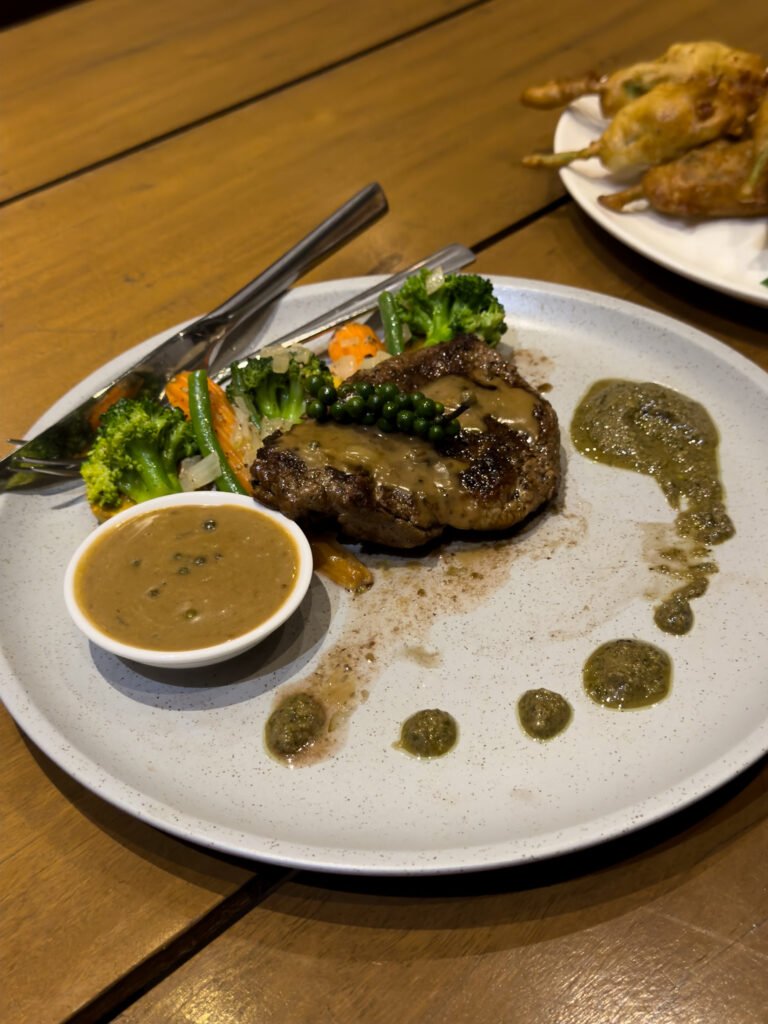
If you want to try traditional Cambodian food with a fusion twist, this is a great place to start. The restaurant works with local products, and the space has a nice outdoor area. We loved the food! There are other locations around the city, so it’s easy to find an Eleven One Kitchen nearby.
Hachi – Sofitel Phnom Penh


One of the restaurants at Sofitel Phnom Penh Phokeethra, Hachi serves exceptional Japanese cuisine and is located in a hotel surrounded by an amazing 7-hectare garden. It is open to the general public and has several dining options within the hotel.
We tried one of the lunch bento boxes and were impressed with the quality and presentation. The restaurant also has private rooms in the Japanese style with tatami, making it a perfect space for a romantic dinner or a special meeting with friends. On weekends, they usually have a sushi buffet, but unfortunately, we didn’t have the chance to try it.
See more here: Hachi – Sofitel Phnom Penh
4P’s Pizza

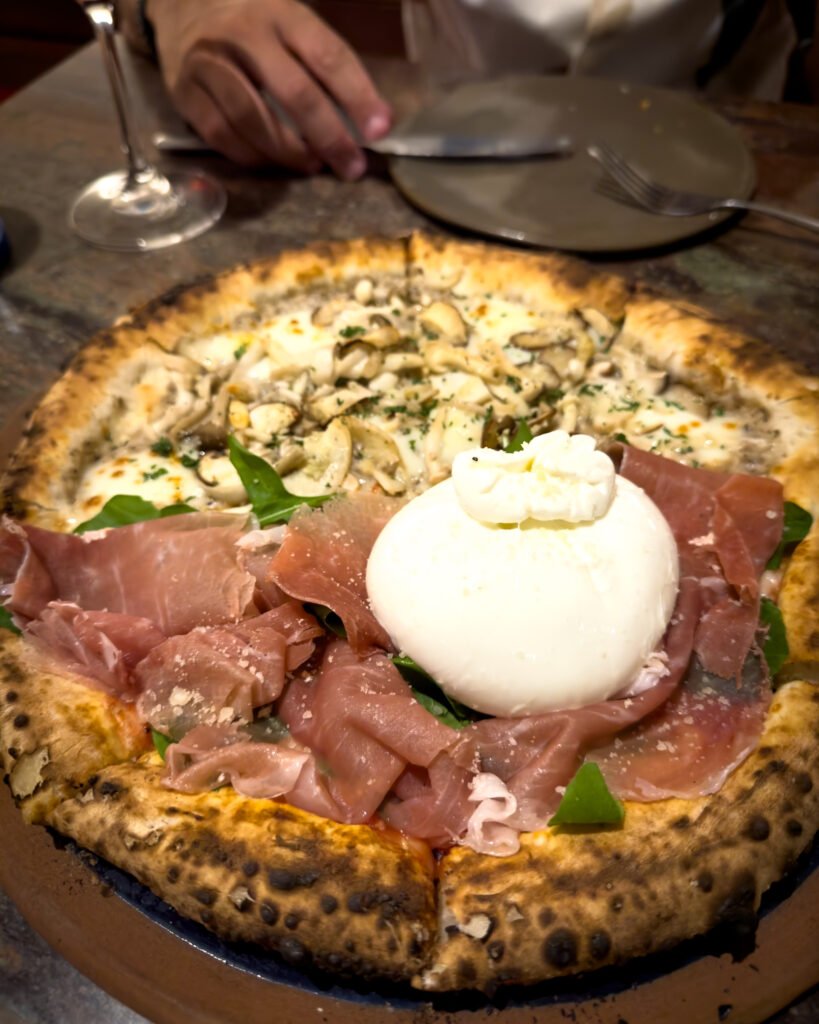
A delicious option for pizza lovers! This restaurant has a zero-waste concept, and the Neapolitan-style pizzas are absolutely delicious. The atmosphere is casual, and the service is impeccable. If you’re in the mood for pizza in Phnom Penh, this is the place to go.
La Coupole – Sofitel Phnom Penh


If you’re looking for an upscale restaurant, La Coupole is an excellent choice. This French brasserie serves breakfast, lunch, and dinner, always in a sophisticated and vibrant atmosphere.
We had lunch here one day and loved both the quality of the dishes and the service. On Sundays, they serve an iconic brunch with fresh seafood, lobsters, and tiger prawns, as well as other international and Asian options.
See more here: La Coupole – Sofitel Phnom Penh
Travel Tips for Phnom Penh
- Best time to visit: The dry season (November to April) is ideal to enjoy the milder weather and avoid the rain.
- Visa: Required for most tourists. It can be applied for online, as well as the e-arrival card, which is mandatory for entry into the country.
- Transportation: The most convenient way to get around is by tuk-tuk. You can use Grab to call tuk-tuks and even private cars.
- Payments: In Phnom Penh, the US dollar is widely accepted, even for card payments. For quick transactions, QR code payments are also becoming increasingly common and available to tourists via the Bakong Tourists app.
- Internet and Mobile Data: To ensure a good connection during your trip, the Holafly eSIM is a great option. Use our code for a 5% discount.
- Travel Insurance: Travel protected with Heymondo insurance. You can also use our code for a 5% discount.
- Water consumption: Tap water in Phnom Penh is not potable. It is recommended to drink bottled water. Most hotels, restaurants, and cafes provide bottled water, and it’s easy to find at local stores.

